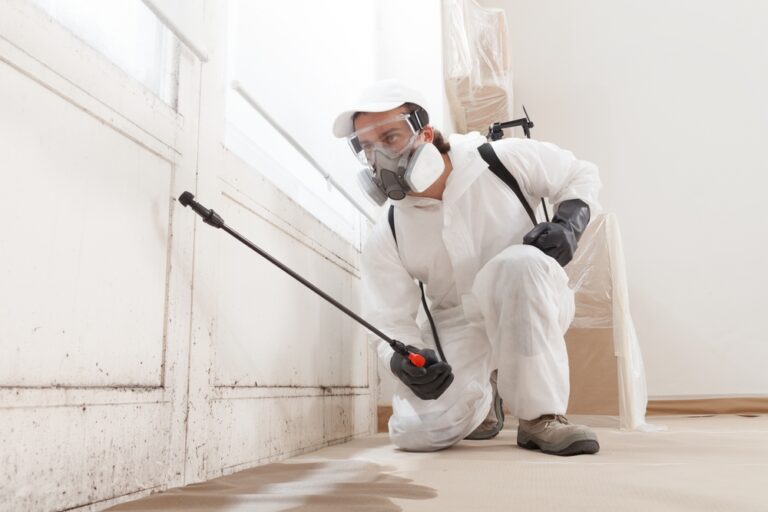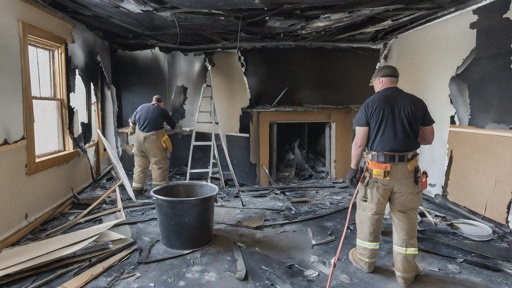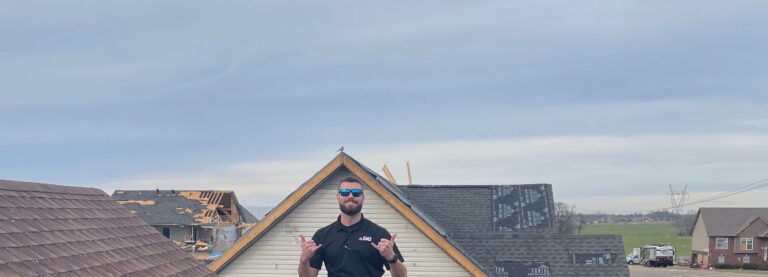Introduction
Mold is a common issue that can affect residential and commercial properties alike. Often unseen until it becomes a significant problem, mold can pose serious health risks and structural damage to buildings. This article delves into the comprehensive mold restoration process employed by experts like those at Apex Restoration DKI, providing insights into safe and effective methods for eliminating mold.
Once mold is detected, experts conduct a thorough assessment to determine the extent of the infestation and identify the type of mold present. Following assessment, a containment strategy is implemented to prevent the spread of mold spores to unaffected areas. The next step involves the careful removal of mold-infested materials, ensuring proper disposal to avoid further contamination. After removal, the affected areas undergo meticulous cleaning using specialized equipment and cleaning agents to eradicate any remaining mold spores. Finally, experts conduct post-remediation testing to confirm that the mold has been successfully eliminated and the property is safe for occupancy.
Understanding Mold: What It Is and Why It Matters
Mold is a type of fungus that thrives in moist environments and can grow on various surfaces, including wood, drywall, and carpets. It reproduces through spores, which can easily become airborne, spreading rapidly throughout a space. Mold growth is not only unsightly but can also lead to serious health issues such as respiratory problems, allergies, and other illnesses, particularly in vulnerable populations, including children and the elderly.
The significance of addressing mold issues promptly cannot be overstated. Beyond the health implications, mold can compromise the structural integrity of a building, leading to costly repairs. Understanding how to recognize and address mold growth is essential for maintaining a safe and healthy environment.
The Importance of Mold Restoration
Mold restoration is not just about removing visible mold; it involves a comprehensive approach to mitigate underlying causes and prevent future growth. Professionals like Apex Restoration DKI focus on restoring the affected areas, ensuring that any moisture problems are resolved, and that the environment is safe for occupants. Ignoring mold can lead to persistent health risks and increased repair costs as the issue worsens over time.
A well-executed mold restoration can enhance air quality, improve property value, and provide peace of mind. Property owners can feel confident in their living or working spaces knowing that potential health hazards have been addressed by experts.
Mold restoration professionals aim to tackle the root causes of mold growth to prevent future issues. This comprehensive approach ensures that affected areas are thoroughly restored and any underlying moisture problems are resolved. By addressing mold promptly, property owners can mitigate health risks and prevent the need for costly repairs down the line. Investing in mold restoration not only improves air quality but also adds value to the property and promotes a sense of well-being for occupants. Having experts address mold concerns provides reassurance that living or working spaces are safe and conducive to good health.
The Mold Restoration Process
Step 1: Initial Assessment and Inspection
The first step in mold restoration is a thorough assessment of the affected areas. This includes identifying the type and extent of mold growth, as well as locating moisture sources that may be contributing to the problem. Professionals will often use specialized tools such as moisture meters and infrared cameras to detect hidden mold and moisture. This assessment is critical as it informs the subsequent restoration steps.
During the inspection, it’s essential to evaluate the entire property, including less visible areas like basements, attics, and behind walls. This comprehensive approach ensures that no mold is left untreated, reducing the risk of recurrence.
Step 2: Containment of Affected Areas
Once the assessment is complete, the next step is to contain the affected areas to prevent mold spores from spreading to other parts of the property. This is typically achieved by using polyethylene sheeting to seal off the area and utilizing negative air pressure machines to keep the air in the isolated zone from leaking out.
Containment is crucial during the restoration process. It not only protects unaffected areas but also ensures that airborne spores do not pose a risk to workers and residents nearby. Proper containment measures help maintain a safe working environment throughout the restoration.
Step 3: Mold Removal Techniques
Mold removal techniques vary based on the type and extent of mold present. Common methods include physical removal, where contaminated materials such as drywall and carpeting are discarded, and cleaning with specialized detergents that eliminate mold spores from surfaces. Soft materials might be treated through methods like steam cleaning, which can effectively kill mold without damaging the fabric.
For larger infestations or in critical areas, professionals may employ more advanced techniques, such as chemical treatment or biocide applications. Each approach requires expertise to ensure effective removal while minimizing risks to health and property.
Step 4: Cleaning and Sanitizing
After the mold has been removed, thorough cleaning and sanitization of the affected areas are necessary to eliminate any remaining spores. This step often involves using HEPA vacuums and air scrubbers to ensure that the air is clear of mold particles.
Sanitizing surfaces with anti-fungal solutions helps prevent future mold growth. This step is essential, particularly in areas prone to moisture, such as bathrooms and kitchens. By applying preventive measures during the cleaning process, the likelihood of recurrence is significantly reduced.
Step 5: Restoration and Repairs
The final stage of the mold restoration process involves restoring the affected areas to their original state. This may mean repairing or replacing drywall, flooring, and other materials that were damaged or removed during the process. Additionally, addressing the moisture issue is critical to prevent future mold growth; this may include fixing leaks, improving ventilation, or using dehumidifiers.
Restoration is not merely cosmetic; it focuses on ensuring the long-term health of the property and its occupants. By addressing the root causes of mold, homeowners can enjoy a safe and attractive living environment once again.
Safety Measures During Mold Restoration
Protective Gear for Experts
Safety is paramount during mold restoration, which is why professionals are equipped with personal protective equipment (PPE). This typically includes respirators, gloves, goggles, and protective clothing designed to prevent exposure to mold spores. By minimizing contact with these allergens, workers can perform their tasks safely and efficiently.
Additionally, the use of equipment that filters out airborne particles is crucial in maintaining the safety of both workers and property inhabitants. Ensuring a safe working environment is a non-negotiable aspect of the mold restoration process; it protects everyone involved and aligns with health standards.
Air Quality Monitoring
Throughout the restoration process, continuous air quality monitoring is essential. This involves testing for mold spores and other allergens in the air, allowing professionals to gauge the effectiveness of their containment and removal strategies. Instruments such as air sampling pumps and particle counters are often used to assess whether the air quality meets acceptable safety standards.
Monitoring air quality ensures that any remaining spores are addressed promptly, maintaining a safe environment for both workers and residents. This proactive approach is critical for achieving long-lasting results in mold restoration.
Common Myths About Mold and Mold Restoration
Myth 1: Bleach Kills Mold Effectively
One prevalent myth is that household bleach is a suitable solution for killing mold. While bleach can kill mold on non-porous surfaces, it does not penetrate porous materials, allowing mold to regrow. Furthermore, bleach can create toxic fumes when mixed with other cleaning agents. Professionals typically use specialized mold removal products that are specifically formulated to address different types of mold safely and effectively.
Myth 2: Mold Can Be Completely Eliminated
Another common misconception is that mold can be entirely eradicated. Mold spores are ubiquitous in the environment; thus, it is nearly impossible to eliminate them completely. However, through effective restoration techniques, mold growth can be controlled, and future outbreaks can be prevented. Understanding this reality is essential for property owners as they navigate mold management.
Myth 3: All Mold is Toxic
Not all mold is toxic, though it can cause health issues for some individuals. While certain types, such as Stachybotrys chartarum (black mold), are known for their harmful effects, many molds are harmless. However, it is always best to treat any mold presence seriously and pursue professional assistance for accurate identification and appropriate remediation.
Why Choose Professionals for Mold Restoration
Expert Knowledge and Experience
Choosing professionals for mold restoration ensures that the job is done correctly and safely. Trained experts possess the knowledge necessary to identify the extent of mold damage and the best practices for remediation. Their experience allows them to navigate complex issues that may arise during the restoration process, providing effective solutions tailored to each unique situation.
Moreover, professionals stay updated on the latest techniques and technologies in mold restoration, ensuring that they employ the most effective methods available. This level of expertise not only enhances the quality of the restoration but also provides peace of mind for property owners.
Furthermore, professional mold restoration services utilize specialized equipment and tools that are not readily available to the average homeowner. This advanced technology allows for thorough and efficient mold remediation, addressing the issue at its core. Additionally, certified professionals adhere to industry standards and regulations, guaranteeing a safe and compliant restoration process from start to finish. Their systematic approach includes thorough inspection, containment of affected areas, mold removal, cleaning, and preventive measures to minimize the risk of future mold growth. Ultimately, choosing professionals for mold restoration provides a comprehensive solution that prioritizes the health and safety of occupants while restoring the property to its pre-mold condition.
Access to Advanced Equipment
Professionals have access to specialized equipment that is not typically available to the general public. This includes high-efficiency particulate air (HEPA) vacuums, air scrubbers, and moisture detection tools that are crucial for effective mold removal and prevention. Such equipment is designed to capture even the smallest mold particles, ensuring a thorough cleaning process.
Utilizing advanced technology allows professionals to perform a comprehensive assessment and remediation, which is vital for long-term success in mold management. The investment in professional services often saves property owners money in the long run by preventing recurring mold issues.
Having the right tools and equipment is essential for achieving optimal results in mold remediation projects. Professionals can efficiently detect and eliminate mold using cutting-edge technology and specialized gear. By investing in professional services, property owners can mitigate the risk of future mold problems. This proactive approach not only ensures a safe environment but also minimizes potential health hazards associated with mold exposure. Professional equipment and expertise go hand in hand in delivering effective and long-lasting mold remediation solutions.
Conclusion
Mold restoration is a critical process that involves careful assessment, removal, and prevention strategies to maintain a safe living environment. By understanding the importance of professional services and the complexities of the mold restoration process, property owners can make informed decisions and protect their health and property.
As we have explored, the steps involved in effective mold restoration include initial assessment, containment, removal techniques, cleaning, and restoration. The importance of safety measures and common misconceptions about mold can further enhance understanding and preparedness in dealing with mold-related issues.
Investing in professional services for mold restoration can ultimately save property owners money by addressing the root cause of mold problems. This proactive approach helps prevent mold from recurring and causing further damage to the property. Additionally, professional services ensure a thorough assessment, removal, and prevention strategies are implemented to maintain a safe living environment. Understanding the complexities of mold restoration empowers property owners to make informed decisions that safeguard their health and property over the long term. Implementing safety measures and dispelling common misconceptions about mold further strengthens one’s ability to effectively manage and mitigate mold-related issues. When you’re ready to have professional mold restoration experts come to service your building call Apex Restoration DKI to take the next steps!





